Ethiopia is a diverse country. The 80-plus ethnic groups with their languages, cultures, and histories of their own services as a testament to this. According to Translators without Borders, there are between 45 to 86 languages spoken throughout Ethiopia. Of these languages, Amharic is the one that is widely used and has served as the official working language of the government. That was until 2020 when the Oromo, Afar, Somali and Tigrigna languages also became the official working languages of the government.
Even though Amharic is the widely used language in Ethiopia, it is not so as a mother tongue. According to Ethnologue, the Oromo language is the largest language used as a mother tongue. An estimated 37.5 million people speak the Oromo language as their first language. Amharic comes in second, where some 31.8 million people use it as their mother tongue, followed by the Somali language (approximately 6.7 million), Tigrigna (6.3 million), and Sidama (4.3 million).
Ethiopia’s literacy rate is just above fifty percent. So when we talk about language, its usage might be exclusive to speaking alone. But now, with the growing rate of literacy, English is also being used at a growing rate in Ethiopia. In major cities like Addis Ababa, English is used as a working language in many private offices. Some government institutions are also known to use the language.
List of Existing Ethiopian Languages
- Aari
- Afar
- Alaba-K’abeena
- Amharic
- Anfillo
- Anuak
- Arbore
- Argoba
- Awngi
- Baiso
- Bambassi
- Basketo
- Bench
- Berta
- Borna
- Burji
- Bussa
- Chara (Ciara)
- Daasanach
- Dime
- Dirasha
- Dizi
- Dorze
- English
- Ethiopian Sign Language
- Gamo-Gofa-Dawro
- Ganza
- Gawwada
- Gayil
- Gedeo
- Gumuz
- Hadiya
- Hamer-Banna
- Hozo (Begi-Mao)
- Inor (Ennemor)
- Kachama-Ganjule
- Kacipo-Balesi
- Kafa
- Kambaata
- Karo
- Kistane
- Komo
- Konso
- Koorete
- Kwama
- Kwegu
- Libido
- Majang
- Male
- Me’en
- Melo (Malo)
- Mesqan
- Murle
- Mursi
- Nayi (Na’o, Nao)
- Nuer (Naath)
- Nyangatom (Dongiro, Donyiro, Idongiro, Inyangatom)
- Ongota (“Birale”, “Birelle”, Ifa, “Shanqilla”)
- Opuuo
- Oromo
- Oromo, Borana-Arsi-Guji
- Oromo, Eastern (Harar)
- Oromo, West Central (Afan Oromo, Oromiffa, Oromoo)
- Oida
- Qimant
- Saho
- Sebat Bet Gurage
- Seze (Sezo)
- Shabo
- Shekkacho
- Sheko
- Sidamo
- Silt’e
- Somali (Common Somali)
- Suri (Surma)
- Tigrigna
- Tsamai
- turkana
- Uduk
- Wolane
- Wolaytta
- Xamtanga
- Yemsa
- Zay
- Zaysete (Zaisse, Zayse-Zergulla, Zaysite, Zaysse, Zergula)
Apart from these languages, there are also a few languages of Ethiopia that are now extinct:
- GAFAT
- WEYTO
- MESMES
Origins of Ethiopian Languages
The Ge’ez language is the most ancient and well-preserved language of Ethiopia. Almost all of the country’s ancient texts are written in this language. However, as we will see later, the Ge’ez language is currently an endangered language and its use is limited to the Ethiopian Orthodox Tewahedo Church.
Ethiopian languages are included in four major language groups: Semitic, Omotic, Cushitic, and Nilo-Saharan.
I) Semitic
The Semitic languages are a branch of the Afro-Asiatic language family. According to Wikipedia, more than 300 million people speak this language, spanning many parts of our world including West Asia, North Africa, and the Horn of Africa. In Ethiopia, the Semitic languages are primarily spoken in the Northern parts of the country. 13 Semitic languages are/used to be spoken in Ethiopia:
- Adarigna
- Amharic
- Argobba
- Birale
- Gafat
- Ge’ez
- Guragigna
- Chaha group (Chaha, Muher, Ezha, Gumer, Gura)
- Inor group (Inor, Enner, Endegegna, Gyeto, Mesemes)
- Silt’e group (Silt’e, Ulbareg, Enneqor, Walane)
- Soddo group (Soddo, Gogot, Galila)
- Tigrigna
- Zay
The Semitic languages are the only languages in Ethiopia (and Africa) that have an alphanumeric system. The Ge’ez alphabet is used by Semitic languages of Ethiopia like Amharic and Tigrigna. Of the thirteen Semitic languages of Ethiopia, Gafat is an extinct language while Ge’ez and Zay are currently endangered.
II) Omotic
Unlike the Semitic language, the Omotic languages are exclusive to Ethiopia. The Omotic languages are mainly spoken in the southwestern parts of Ethiopia, particularly in the Omo River region. Also, unlike the Semitic, these languages do not have an alphabet system, meaning that they are unwritten languages. The Omotic languages of Ethiopia are
- Anfillo
- Ari
- Bambassi
- Basketto
- Bench
- Boro
- Chara
- Dime
- Dizzi
- Dorze
- Gamo-Gofa
- Ganza
- Hammer-Banna
- Hozo
- Kachama-Ganjule
- Kara
- Kefa
- Kore
- Male
- Melo
- Mocha
- Nayi
- Oyda
- Shakacho
- Sheko
- Welaytta (Welamo)
- Yemsa
- Zayse-Zergulla
III) Cushitic
Much like the Semitic languages, the Cushitic languages are also a branch of the Afroasiatic language family. These languages are spoken primarily in the Horn of Africa, but a minority of speakers of these languages exist in North Africa as well. Similar to the Omotic languages, the Cushitic languages are unwritten. However, the speakers of these languages constitute the majority of Ethiopia’s population. Ethiopia’s first and third largest languages (Oromo and Somali) are Cushitic languages; its speakers account for more than 40% of the Ethiopian population. The Cushitic languages of Ethiopia are
- Afar
- Agewigna
- Alaba
- Arbore
- Awngi
- Baiso
- Burji
- Bussa
- Daasanech
- Gawwada
- Gedeo
- Hadiyya
- Kambatta
- Kemant
- Konso
- Kunfal
- Libido
- Oromigna
- Saho
- Sidamigna
- Somaligna
- Tsamai
- Werize
- Xamtanga
IV) Nilo-Saharan
The Nilo-Saharan language family is perhaps the most spoken language family in Africa (compared to the above three). It is spoken by up to 60 million people that span across different parts of the continent. Libya, Algeria, Benin, Egypt, Ethiopia, Tanzania, and DRC are among the many countries these languages are spoken. As indicated by its name, the Nilo-Saharan language family is spoken in the Nile-Basin and Central Sahara Desert regions. In Ethiopia, the Nilo-Saharan languages are:
- Anuak
- Berta
- Gobato
- Gumuz
- Komo
- Kunama
- Kwama
- Kwegu
- Majang
- Me’en
- Murle
- Mursi
- Nera
- Nuer
- Nyangatom
- Opuuo
- Shabo
- Suri
- Uduk
Top 5 Most Spoken Languages of Ethiopia
Of the 86 languages of Ethiopia, only a select few are spoken by the majority of the population. While some are spoken by a much smaller population, others are endangered or extinct. As we saw earlier, the Afroasiatic family (Semitic and Cushitic) are the most prominent languages of the country. Currently, there are three Cushitic (Oromo, Somali, and Afar) and two Semitic (Amharic and Tigrigna) languages that serve as the official working languages of Ethiopia. One of the reasons these languages are chosen to be the working languages of Ethiopia is the number of people that speak them. In terms of native speakers, the five largest languages of Ethiopia are
- Amharic
- Oromo
- Somali
- Tigrigna
- Sidama
1. Amharic Language
Amharic (አማርኛ – Amarigna) is an Ethiopian Semitic language that is spoken as a primary language by the Amhara ethnic groups of Northern Ethiopia. There are currently 31.8 million Ethiopians who speak Amharic as their first language, and some 25 million people speak it as a second language, making Amharic the second-largest primary language, and the first largest Ethiopian language in use. It is the second most widely spoken Semitic language (next to Arabic) and is currently one of the five working languages of the Ethiopian government.
The Amharic language uses the Ge’ez alphabet system, thus making it one of the very few written languages in Africa. This is mainly because the language itself originated from the ancient language of Ge’ez. One can simply observe numerous similarities between the two languages. Amharic also shares some similarities with other Semitic languages like Arabic. For example, the Amharic word ደም (Dem – meaning blood) is translated to دم (Dum – Blood). There are also similarities with languages like Tigrigna and other Semitic languages.
Grammar
Some of the grammatic properties of the Amharic languages include
- Pronouns: in the Amharic language, there is a clear distinction between gender pronouns. Pronouns like እኔ (“ene”) is the equivalent of “I” in English. እሱ (“isu” which translates to “he”) and እሷ (“isua” which translates to “she”) are singular, gendered pronouns. While እነሱ (“inseu” which translates to “they”) is a plural, gender-neutral pronoun.
- Plurals: Nouns are often pluralized by adding an “-och” suffix. For example, the word ሰው (sew – meaning “person”), when pluralized, becomes ሰዎች (sew-och, meaning people).
- Nouns: Much like the french language, the Amharic language uses gendered nouns. Nouns can have masculine or feminine gender, and it is specified using various suffixes.
- Punctuation: In Amharic writing, there are several punctuations. Some of them are (:)word separator, (::) full stop/period, (፣) comma, (፤)semicolon, and (፦)preface colon/introduces speech from a descriptive prefix.
Influence of the Amharic Language
The Amharic language is perhaps the most influential language of Ethiopia. It has been the official language of Ethiopia since the 14th century A.D. The language is said to have spread through the conquests of Emperor Menilik II, in which he shaped the present-day map of Ethiopia. It was during these times that the Amharic language started to gain more speakers. The printing press in Ethiopia has also contributed to the spread of the Amharic language. In 1921, Berhanena Selam (Light and Peace) Printing Enterprise was opened in Addis Ababa, and most of its publications such as books and newspapers were in the Amharic language, using the Ge’ez alphabet.
The literacy campaigns launched by Ethiopia’s communist government have also helped the spread of the Amharic language. Because of these reasons, and many other factors, the Amharic language remains the most widely spoken and influential language of Ethiopia.
The Amharic language is a language with a rich tradition. Amharic prose, poetry, and songwriting date back to the 14th century, but have become more popular after the introduction of a printing press in Ethiopia.
Amharic books have been around for ages. Compared to Ge’ez books, however, Amharic literature is relatively new. The Garima Gospels, which are written in Ge’ez, are considered Ethiopia’s oldest books and the world’s oldest bibles. In contrast, Afework Gebreyesus’ “Tobia” is considered to be Ethiopia’s first novel. Written in Amharic, it was first published in Rome in 1908.
(Afework Gebreyesus)
The Amharic language is spoken in many dialects across Ethiopia. In some areas, Amharic is sometimes mixed with the local language. In the cities, English seems to be the one influencing Amharic the most. The Amharic language has been getting growing worldwide recognition. It has been listed as one of the official working languages in Washington DC, USA. It is also supported by UTF-8 encoding and can be displayed on websites and browsers. The language is also supported by Google Translate and several dictionaries and applications that teach the language have been developed over the past decade.
20 Amharic Words and Phrases You Should Know
- አዎ (‘awo’) – Yes
- አይ (‘ayi’) – No
- ምን አልባት (‘min albat’) – Maybe
- እሺ (‘eshi’) – Ok
- አመሰግናለሁ (‘āmeseginalehu’) – Thank You
- ይቅርታ (‘Yikirta’) – Sorry/Excuse me
- ሰላም (‘Selam’) – Hello
- ደህና ሁን (‘dehina huni\’) – Goodbye (The Italian word ‘Ciao’ is also understood by many)
- እንዴት ነህ (‘inidēti nehi’) – How are you?
- እንኳን ደህና መጣህ (‘inkiwan dehna metah’) – Welcome
- ስሜ…ነው (‘sime….new’) – My name is…
- ከየት ናችሁ (‘keyet nachihu’) – Where are you from?
- እንደምን አደርክ/እንደምን አደርሽ? (‘Indemin Aderk/Indemin aderish’) – Good Morning
- እንደምን ዋልክ/እንደምን ዋልሽ? (‘Indemin wa’lk/Indemin wal’sh’) – Good Afternoon
- አንደምን አመሸህ/አንደምን አመሸሽ? (‘Indemin Amesheh/Indemin Ameshesh’) – Good Evening
- ደህና እደር/ደህና እደሪ (‘Dehina Ider/Dehina Ideri’) – Good Night
- መልካም እድል (‘Melkam Idil’) – Good Luck
- መልካም ቀን (‘Melkam Qen’) – Have a nice day
- አማርኛ አልናገርም (‘Amarigna Alinagerim’) – I don’t speak Amharic
- በአማርኛ ምን ይባላል? (‘be’amaregna min yibalal’) – What is it called in Amharic?
2. The Oromo Language
The Oromo language is an Afroasiatic language that is spoken in Ethiopia and some parts of the horn of Africa. It belongs to the Cushitic language branch and is primarily spoken by the Oromo people of Ethiopia. Other ethnic groups found in Northeastern Kenya and small parts of Somalia also speak this language.
The Oromo language has the largest number of native speakers in Ethiopia. With more than 37 million speakers, it makes up 33.8% of Ethiopia’s population. The Oromo language is the most widely spoken Cushitic language in the world. Starting from 2020, the Oromo language has been serving as one of the official languages of the federal government of Ethiopia. The language is also used as an official language of the Oromia and Harari regional governments and the Dire Dawa city administration.
The British Linguist and anthropologist Roger Blench divide the Oromo language into four variations:
- Western Oromo
- Shewa (Tuulama, Arsi)
- Eastern Oromo (Harar)
- Southern Oromo (Ajuran, Borana, Gabra, Munyo, Orma, Sakuye, Waata)
The Oromo language is a highly developed spoken language. Unlike the Semitic languages of Amharic and Tigrigna, the Oromo language didn’t have an alphabet of its own. That is until the 19th century when Latin script began to be used to write in the Oromo language. The 19th-century German missionary Johann Ludwig Krapf wrote the first Oromo translations of the Gospels of John and Matthew in 1842. Two years later, in 1844, the first Oromo dictionary and grammar (known as “A Grammar of the Galla Language” and “Dictionary of the Galla Language”) was introduced by Karl Tutschek. (http://worldcat.org/identities/lccn-no91009172/)
Johann Ludwig Krapf
For most of the Oromo language’s written history, however, the language was written using the Ge’ez script. Ethiopia’s communist government that came to power in 1974, launched a literacy campaign in various Ethiopian languages, including the Oromo. During this time, publishings and broadcasts in the Oromo language were high, but the publications still used the Ge’ez script.
The current writing system of the Oromo language is known as Qubee. It is a writing system that uses Latin script and was formally adopted in 1991. The adoption of Qubee has increased publications in the Oromo language. It is said that more Oromo texts were written between the years 1991-and 97 than in the last 100 years. Oromo language speakers found outside Ethiopia also use Latin scripts with different systems of writing.
Read more: Oromo | History, Map, Flag, Language & Culture
Grammar
- Nouns: The Oromo language, like most Afroasiatic languages, uses gendered nouns. Any noun in the Oromo language either belongs to a masculine or feminine grammatical gender.
- Pronouns: Singular third-person pronouns in the Oromo language are often specified by adding suffixes. However, singular first-person pronouns have their own distinct expression. A few examples can be “ani” which means “I” in English, and “isaani” which translates to “they”.
20 Common Words and Phrases in the Oromo Language You Should Know
- Maqaankee eenyu? – What is your name?
- Eessa Jiraatta? – Where do you live?
- Galatoomaa – Thank you
- Yeroon meeqa? – What time is it
- Maaliif? – Why?
- Dhiifama – Sorry
- Guyyaan har’aa maalidha? – What’s the day today?
- Akkam? – How are you?
- Eeyyee – Yes
- Miti – No
- Baga nagaan bultan. – Good morning
- Galgala nagaa. – Good evening
- Halkan gaari. – Good night
- Tole – Ok
- Negaa ti – Goodbye
- Maqaan ke eennu? – What’s your name?
- …Maqaan koo …– My name is…
- Eessa irraa dhufte? – Where are you from?
- …An kanan dhufe… – I’m from…
- Milkaa’i/Milkaa’aa – Good Luck
Since 1991, the Oromo language has been receiving growing attention. Poetry, prose, and songwriting in the Oromo language have become quite popular. Currently, there are several online Oromo dictionaries and even more applications that teach the language.
Read more: 200+ Basic Oromo Language Words & Phrases You Should Know
3. The Tigrigna Language
The Tigrigna language is an Afroasiatic language spoken in East Africa. It is a Semitic language that is primarily spoken in Eritrea and the Tigray region of Northern Ethiopia. In Ethiopia, Tigrigna is the 4th largest native language. Spoken by approximately 7 million people, its speakers account for roughly 6 percent of Ethiopia’s population.
Much like the Amharic language, the Tigrigna language is strongly influenced by Ge’ez. This is observed especially in Tigrigna literature. The earliest known Tigrigna text dates back to the 13th century. It was a text of local laws that were found in Logosarda, Debub Region in Southern Eritrea. The first literary text in Tigrinya was published in Europe. In 1895 Feseha Giyorgis, a scholar who was studying Italian and Latin and taught Tigrinya in Naples, published a pamphlet in Rome giving an account of his journey to Italy five years earlier. The content of the pamphlet indicates that his primary audience was the educated elite of his home country, as it focuses on the author’s impressions of the exotic country to which he had traveled.
The first work published in Tigrinya was a translation of the Four Gospels by Dabtera Matewos. It is said to be written in the 1830s and was published in 1866 by Isenberg, in Basle, Switzerland. The Tigrinya title is ወንጌል ቅዱስ ናይ ጎይታና ናይ ምድሓኒናን የሱስ ክርስቶስ. This work is of major significance because it marks the first appearance of the Tigrinya language in book form as well as in a full Ge’ez script.
European missionaries were responsible for much of Tigrigna’s publications from the 1890s onwards, including the first Tigringna newspaper in 1909, but that it did not last long. During the British Military Administration of Eritrea in 1941-to 1952, the Ministry of Information of the administration published a weekly newspaper in Tigrinya. At that time, a single newspaper would cost about 5 cents; the number of copies of the newspaper sold per week would reach up to 5,000. At that time, it was reported to be the first of its kind.
Tigrigna has and continues to serve as the official language of Eritrea and, as of 2020, is listed as one of the working languages of Ethiopia as well. The Tigrigna language has no significant dialectical variation. However, scholars divide the language into two mutually intelligible dialects: Asmara (spoken in Eritrea) and Tigre (spoken in Ethiopia).
Grammar
- Nouns: Tigrigna has both masculine and feminine grammatical genders. These genders apply to all nouns found in the language. Tigrigna nouns have both singular and plural forms, though a plural form may not be necessary for some contexts
- Adjectives: Just like nouns, adjectives in Tigrigna have genders. The genders of the adjectives follow that of the noun.
- Pronouns: within personal pronouns, gender is distinguished in the first person as well as third.
20 Tigrigna Words You Should Know
- ሰላም (‘Selam’) – Hello
- ደሓን ኩን (‘Dehan Kun’) – Goodbye
- መርሓባ (‘Merhabba’) – Welcome
- በጃኻ (‘Bejakha’) – Please
- የቐንየለይ (‘Yekenayeley’) – Thank you
- ኣይትሓዘለይ (‘Aytehazeley’) – Excuse me
- እወ (‘Ewe’) – Yes
- ኣይፋል (‘Ayifal’) – No
- ከመይ ሓዲርካ kemey ḧadirka – Good Morning
- ከመይ ኣምሲኩም (kemey ‘amsikum) – Good evening
- ምናልባት (min albat) – Maybe
- ሕራይ (hray) = Ok
- መን ሽምኪ (መን ሽምኪ) – Whats your name
- ክንደይ ዕድመኻ (kindey edmeka) – How old are you?
- ኣበይ ትቕመጥ (Abey tqmet) – Where do you live
- ክምይ (kemey) – How are you?
- ደሓን ወዓል (Dehan we’al) – Good day
- ደሓን ሕደር (Dehan Hider) – Good Night
- ሰዓት ክንደይ ኮይኑ (Se’at kindey Koyinu) – What time is it?
- ኣበይ እዩ ዓድኻ/ኺ (Abey iyu Adhka) – Where are you from?
4. The Somali Language
Somali is an Afroasiatic language that belongs to the Cushitic branch. It is primarily spoken by the Somali people of Somalia and Eastern Ethiopia. Currently, the Somali language serves as the official language of three countries; Somalia, Somaliland, and Ethiopia. In Ethiopia, there are more than 6.7 million Somali native speakers. The Somali language has its varieties and those varieties are broadly divided into three main groups: Benadir, Northern, and Maay.
Benadir (also known as Coastal Somali) is spoken on the central Indian Ocean seaboard, including Mogadishu. It forms a relatively smaller group. The dialect is mutually intelligible with Northern Somali.
Northern Somali forms the basis for Standard Somali. It is spoken by more than 85% of the entire Somali population, with its speech area stretching from Djibouti, Somaliland, Somali region of Ethiopia to most parts of Somalia. This widespread modern distribution is a result of a long series of southward population movements over the past ten centuries. Lamberti, in his “Studies of Languages of the Horn,” subdivides Northern Somali is into three dialects: Northern Somali proper (spoken in the northwest), the Darod group (spoken in the northeast and along the eastern Ethiopia frontier; the greatest number of speakers overall), and the Lower Juba group (spoken by northern Somali settlers in the southern riverine areas). The dialect of the Isaaq clan family has the highest prestige of any other Somali dialect.
Maay is not closely related to the Somali language in sentence structure and is spoken by smaller Rahanweyn communities. Collectively, these languages present similarities with Oromo that are not found in mainstream Somali. Chief among these is the lack of pharyngeal sounds in the Rahanweyn/Digil and Mirifle languages, features which by contrast typify Somali but are not Somali. Although in the past frequently classified as dialects of Somali, more recent research by the linguist Mohamed Diriye Abdullahi has shown that these varieties, including Maay, constitute separate Cushitic languages. Despite these linguistic differences, Somali speakers collectively view themselves as speaking a common language.
5. The Sidama Language
Sidama is an Afroasiatic language, belonging to the Cushitic branch, that is spoken in the Southern parts of Ethiopia. The language is primarily spoken by the Sidama people of the Sidama regional state of Ethiopia. The language is not known to have any dialects, but shares similarities with other languages found in the region such as the Kambaata and Hadiya languages. The Sidama language used the Ge’ez script for its writing until 1993, after which it started to use the Latin script.
Ethnicity In Ethiopia
Ethiopians are, without a doubt, one of the most diverse people on our planet. As mentioned earlier, the country is made up of more than 90 ethnic groups, living in eleven regional states and two city administrations. Of these ethnicities, the Oromo is the largest. Followed by Amhara, Somali, and Tigray ethnic groups. These four ethnic groups together account for 75% of the Ethiopian population. For more info, visit Wikipedia.
The Ge’ez Language
Ge’ez is an ancient Ethiopian language that belonged to the Semitic language branch. The language has its roots in ancient Ethiopia, otherwise known as present-day Ethiopia and Eritrea. The Ge’ez language is currently the liturgical language of the Ethiopian Orthodox Church.
The earliest known Ge’ez script is found on the Hawelti obelisk in Matara, Eritrea, while the earliest surviving Ge’ez text is the Garima Gospels, which is also the oldest bible in the world. Almost all ancient Ge’ez texts are Christian and date back to the early 5th century A.D. Among the many Ge’ez texts, the Book of Enoch is a significant one, as the Ge’ez version of the text is the only complete surviving text. The Ge’ez language is responsible for the flourishing of Ethiopian literature, as many ancient books, spanning different topics have been written in this language. Ge’ez can also be seen as the forefather of Ethiopian Semitic languages. Amharic and Tigrigna, in particular, are heavily influenced by the Ge’ez language. The Ge’ez alphabet is also influential and still widely used to write in Amharic and Tigrigna.
Currently, however, the Ge’ez language is an endangered language and its use is only limited to the Ethiopian and Eritrean Orthodox and Catholic churches. Ethiopa]ian Jews also use the language in prayer services.
Conclusion
As seen in the above article, Ethiopia is rich in languages. This diversity has created a vibrant scene in which one can learn about different cultures and history without even leaving the country. The Ethiopian constitution, which was ratified in 1991, grants the right to every citizen to practice and learn in their languages. Ethiopian languages, with few exceptions, have not been studied well enough. Considering the amounts of speakers they have and the cultures tied with them, these languages deserve much more attention from both Ethiopian and non-Ethiopian scholars.
Reference
- https://scholar.harvard.edu/erena/oromo-language-afaan-oromoo#:~:text=Oromo%20people%20speak%20Afaan%20Oromoo,mainly%20farmers%20and%20cattle%20herders
- https://scholarcommons.scu.edu/library/131/
- https://en.wikipedia.org/wiki/Ge%CA%BDez#History_and_literature
- https://en.wikipedia.org/wiki/Sidama_language
- https://en.wikipedia.org/wiki/Somali_language
- https://en.wikipedia.org/wiki/Amharic
- https://en.wikipedia.org/wiki/Oromo_language
- https://www.langcen.cam.ac.uk/resources/lango/oromo.html

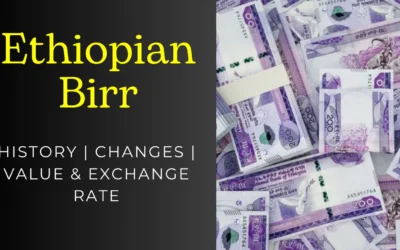
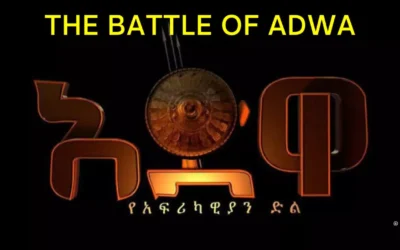
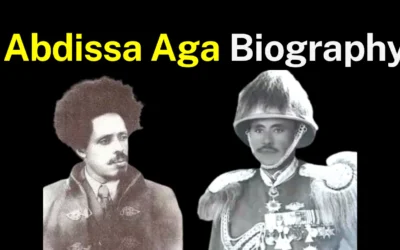
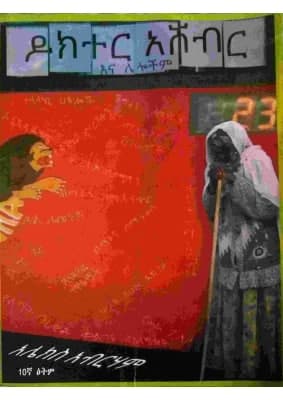
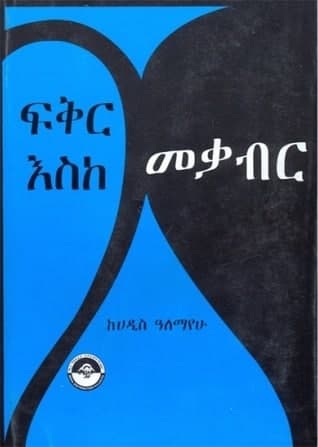
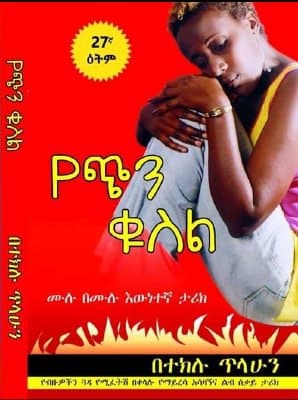
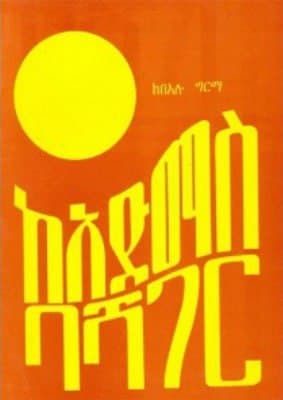

Awesome! Its actually remarkable article, I have got much clear idea concerning from this post.
Interesting blog post! I’m curious to know more about the origin of Ethiopian languages.